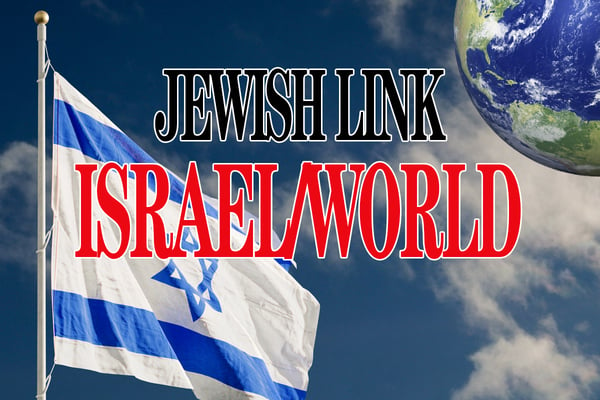I.
With elections for the World Zionist Congress underway, the adage that a budget is in reality a values statement is very much on our minds. For me, the decision to support Orthodox Israel Coalition (OIC)- Mizrachi in this election, in which over $1 billion will be allocated to various organizations and projects, and to have the honor of serving as a delegate on this slate, is exactly that, a matter of religious conviction. Perhaps these convictions, so deeply felt, can be best expressed through investigating one of the core aspects of Mitzvat Sippur Yetziat Mitzrayim (Telling the story of the Exodus).
Reb Chaim Brisker, with characteristic incisiveness, distinguished between the daily obligation of zechirat yetziat mitzrayim (remembering the Exodus) and the annual obligation of sippur yetziat mitzrayim (telling the story of the Exodus), on the basis of three fundamental distinctions. Amongst these, Reb Chaim delineated that only the annual mitzvah of sippur was possessed of a narrative arc, מתחיל בגנות ומסיים בשבח, “to begin with the degradation and to conclude with the praise of [our elevation].”
And yet, the Gemara (Pesachim 116a) itself presents a debate regarding what precisely constitutes this narrative arc. What is the degradation, and what exactly is the elevation? Shmuel argues that the arc is a story of physical liberation, מעבדות לחירות, from our cruel bondage in Egypt to our liberation from slavery. Rav, on the other hand, believes that the narrative arc which is required is actually a spiritual transformation, מתחילה עובדי עבודה זרה היו אבותינו, initially we were idolaters, and through our liberation from Egypt and the subsequent Revelation at Sinai, עכשיו קרבנו המקום לעבודתו, “we have now been brought close to Hashem.”
As a matter of Halacha, we do not select between Rav and Shmuel’s respective conceptions of the narrative arc of the seder. On the basis of Rif, Rosh, Rambam and others, we do, in fact, organize our Seder around a double arc, celebrating both the national liberation of our people from centuries of terrible suffering within the context of the overall spiritual transformation of our people.
Defining geulah, redemption, in this fashion, is perhaps less intuitive, but is far more profound. Indeed, Rav’s assessment is endorsed by Ramban in his introductory essay to Sefer Shemot, which he terms Sefer Ha-Geulah. There, Ramban argues that the Jewish people could not possibly be considered redeemed on the basis of physical salvation from the Egyptians alone. Rather, geulah could only be achieved through restoring our relationship with Hashem, through Sinai and the construction of the Mishkan.
II.
The ideological core of the Religious Zionist movement led by Mizrachi is essentially rooted in the duality of our understanding of the transition between גנות ושבח. While many of our brothers, whom we love fiercely, have chosen to honor only one of the views in the Gemara, valuing either physical redemption or spiritual redemption alone, our community remains faithful to both the views of Rav and Shmuel. Between physical and spiritual redemption, we should not choose, we must not choose, and we cannot choose.
On the one hand, we feel a sacred duty to further the ongoing physical liberation of our people from millennia of suffering in the worst conditions of exile and to continue to strengthen Jewish sovereignty over the Land of Israel in the face of the most implacable, hostile and even genocidal enemies. The milchemet mitzvah (obligatory war) of defending Israel from an invading enemy, עזרת ישראל מיד צר שבא עליהם to use Rambam’s expression, which began on October 7 and the epochal war which has followed, has only strengthened this commitment.
The contribution of the Religionist Zionist community to this war has been immense, and the universal halachic responsibility of materially supporting the war effort, אפילו חתן מחדרו וכלה מחופתה (“a groom leaving his chamber and a bride from under the wedding canopy”) knows no halachic distinction between the Jews of Israel and the Jews of the Diaspora. We are all, without exception, obligated to do all in our power for this war effort. This is reflected in the hundreds of lone soldiers from our community serving in the war, our community’s massive material support for the war effort, and the many missions our community has undertaken to Israel. Voting in the World Zionist Congress for the Mizrachi Slate is very much part of that effort.
And yet, this commitment to the physical security of the People of Israel and the Land of Israel is but the framework for our greater aspiration. We aspire, individually and collectively, for a society within Israel, and through Israel, rooted in an immersion in Torah and love of mitzvot.
We recognize in the return of millions of our brothers and sisters to the Land of Israel not only the opportunity to fulfill the discrete mitzvah of yishuv (settling) Eretz Yisrael; not only an opportunity to fulfill the agricultural laws, דיני זרעים; not only to qualitatively upgrade our fulfillment of even personal obligations in line with Ramban’s reading of the Sifrei, but, as our teacher, Rav Aharon Lichtenstein, zt’l (whose 10th yahrzeit will be marked this Rosh Chodesh Iyar), so often emphasized, the opportunity to dwell in the very shadow of the Shechinah.
Mizrachi’s commitment, as well as that of all of its partner organizations, the Orthodox Union, Yeshiva University, Rabbinical Council of America, and many others, to maintain both Rav and Shmuel’s views of redemption, physical and spiritual, is fully deserving of our community’s support. The funds which will be allocated through the World Zionist Congress, exceeding $1 billion, will be allocated through your support of Mizrachi to Torah institutions that maintain our sacred duty to protect the Land and its People, to individuals who have borne the greatest burdens in this struggle, including terror victims and lone soldiers, and to Religious Zionist education in Israel and in the Diaspora.
Perhaps most importantly, our full embrace of both physical and spiritual redemption allows us to serve as a vital bridge to those of our brothers who embrace one, but not both, of these critical mandates. Nothing is more vital right now than achdus, and our capacity to serve as a force for cohesion in the Jewish people is as much a privilege as it is a responsibility.
As we approach the Holiday of Redemption, חג הפסח, we express our gratitude to the Ribbono shel Olam to live in a generation in which we have the opportunity to participate in both the physical and spiritual renewal of our people. This itself is a cause for hallel v’hoda’ah (praise and gratitude).
Indeed, as the Rov noted, building off of his illustrious grandfather’s three distinctions between zechira and sippur, there is a fourth and final distinction. Only Sippur Yetziat Mitzrayim, in which we ourselves experience the redemptive moment, necessitates an immediate Hallel.
May we give thanks to Hashem for the blessings of the past, petition Him for His assistance in the great work which lies ahead, and prepare ourselves to shoulder both the spiritual and physical burdens of His People through our support of Mizrachi. Chag Kasher V’Sameach.
Rabbi Fridman is the Rabbi of the Jewish Center of Teaneck, and Vice President of Community Affairs for the RCBC. This article is written in memory of Captain Daniel Perez, who died al Kiddush Hashem defending the community of Nachal Oz on October 7th, and in honor of Daniel’s father, my dear friend, Rav Doron Perez, Chairman of World Mizrachi.









